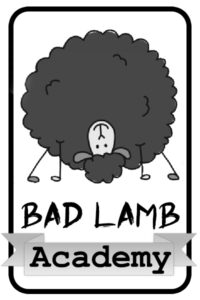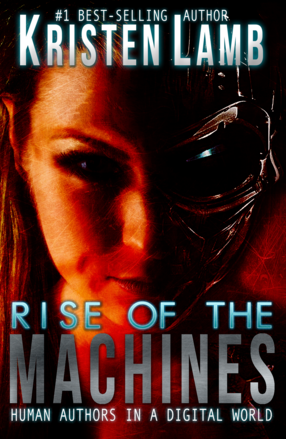
Creating great characters has to be one of the toughest tasks for any fiction writer to successfully accomplish. Let’s be honest. Plot is important, but characters have the power to make or break a story. Most of us don’t remember plot…we remember people. We identify. There is something about characters that resonates within our soul, and we’re hooked.
Put it another way. Do you recall all the ins and outs of the Star Wars movies? Probably not. Most of us don’t. While we will always remember Darth Vader, we might have to pause and think about what nefarious deed Darth was up to in which movie. ***That scene with the cute fuzzy critters that looked like heavily-armed Shih Tzus was the third one. Right?
Characters are vital. They are the life force of your story.
Today’s blog will help you give life to great characters. How? By teaching you not to kill them.
There are a number of ways to strangle, smother, or otherwise crush the life from what could have been a wonderful character. One popular method of involuntary homicide (character-cide?) is the ever-tempting Bog of Back-Story. Like a real bog, the Bog of Back-Story looks lush, verdant, and innocent from afar. One might even easily mistake this smooth green landscape for solid ground…but take a closer look. This sucker is nothing but mud and muck and quicksand. Step in deep enough and you ain’t getting out.
I have edited hundreds of short stories and novels. I cannot count the number of times I’ve read a really clever story that had some great forward momentum…only for the author to stop and go back in time to explain why such-and-such did thus-and-such. What? Huh?
It is my opinion that the Bog of Backstory is most often the by-product of a writer’s failure to plan ahead of time. Writers (especially new writers) often charge into a plot without ever understanding the psychological terrain of the characters. As a consequence, it is then easy for characters to wander off the path (plot) and end up stuck in the mire of memories and recollections. I know this from personal experience. This is how my first novel (years ago) somehow turned into an epic saga spanning multiple family generations, rendering it utterly unpublishable. This can very easily happen to any author, particularly a new author. Characters will take off and get into all sorts of trouble unless we, the “parents” put down some boundaries and stick to our guns.
In fact, in my Warrior Writer Boot Camp, the very first thing we begin with is an in-depth profile of all the players. We make the writer get it all out of her system. We write down everything that forged the characters who will be present the day of the inciting incident. We write down their childhood tragedies, love disappointment and all the abuse they have endured…so we can then get to the real story.
Think of it this way, if a guy is holding a gun to your head to take your car, do you really care about the childhood trauma that made him turn to crime? Uh…no. But basically that is what we do to the reader when we interrupt the flow of action to shift back in time and explain. Readers don’t generally care as much about our character’s past as we do. Just like no one will ever find our children cuter than we do :D.
So plan ahead of time.
Note of Caution: Writing the novel is not the time to get to know your characters and their motivations.
Possessing a good understanding of a character’s back-story is crucial to creating a character with depth. Note I said “a good understanding.” Back-story gives life to a character much like water gives life to a plant. However, filling a plot with back-story (like overwatering) will just kill forward momentum and drown your character.
So how do you avoid falling into the Bog of Back-Story? The same way you would avoid falling into a real bog. Do an Area Study. You wouldn’t consider charging off into the Florida Everglades without a map or guide or any basic understanding of the terrain. Why do it with your writing?
Here is some good news. Back-story that is crafted ahead of time, that is planned and purposeful, transcends into something altogether new—a character profile. And since character profiling happens to be a skill that takes time and practice to master, I highly recommend learning from those who do it well. Bob Mayer teaches some wonderful techniques for this in his “Novel Writers Toolkit, ” and Author Jody Hedlund recently posted a blog about crafting character profiles. There are all kinds of templates out there and I recommend that you use the tools that are out there. It will make your work stand apart from the thousands who all want to be successful authors too.
So stay on solid ground. Until next time…








7 comments
Skip to comment form
Short, but sweet. Time to write Chapters 9-13, the War in Heaven through Josh’s birth.
Backstory is tricky.
Donald Maass had a good rule of thumb he used for backstory: Backstory must add uncertainty to the present. If it doesn’t, cut it or change it.
As Shakespeare once wrote, “All the world is indeed a stage and we are merely players”, what static plot would there be if our characters remained nondescript and just there to push the plot forward?
To tell the truth, there are several major bestselling authors who rely on bland main characters to propel their novels. They would argue that the pace is the most important factor, and characterization would just slow down the story. Some authors get away with it, because their gimmick is greater than their characters. Thrillers seem to fall into this category. I love Michael Crichton’s books, but even though I recall his story, I can’t – for the life of me – ever recall his characters being noteworthy other than just providing a link between reader and story. The same goes with Dan Brown who comes up with provocative narratives that hinge mainly on Langdon jumping through hoops just to decipher the next clue.
To me, a reader, characterization IS key. My own stories rely heavily upon the humor and the soul-searching they go through. They must not only overcome the physical or mental obstacles, but GROW as human beings.
I completely agree with you, Kristen. I enjoy learning about the motivation for a character’s actions, but I am often bored to death when I read the motivation of the motivation. I’m really glad I read your post because it helps me rethink how I am utilizing back story/flash back in my writing. Thanks!
Great post. During my re-edit my editor and I had to take out so much data dump, redundancies, and other stuff so the story would not be bogged down. Lesson learned: A writer cannot become emotionally attached to their work.
Stephen Tremp
This reminds me so much of those twitterpeeps and FBfriends who feel the need to tell us what they’re eating, what they ate, or what they will be eating; when they leave their seat (and why); how they spent their day, or how they intend to spend it, etc. We all have lives…those who need to post so much personal and/or inconsequential info just don’t realize that we all have it and, really, nobody wants to read about it. I guess that’s the same with characters. They (usually) had “lives” before we put them on the page…we should acknowledge that fact and focus on what brings them to our page. Thanks for the post.
Perhaps if a writer is so keen on backstory of characters & getting bogged down in it then the story should be a memory that happened to them instead of fighting to write about a current event. Instead of writing about the crime & the motivation behind it, you could write about what happened in the child’s life to cause them to turn to crime.